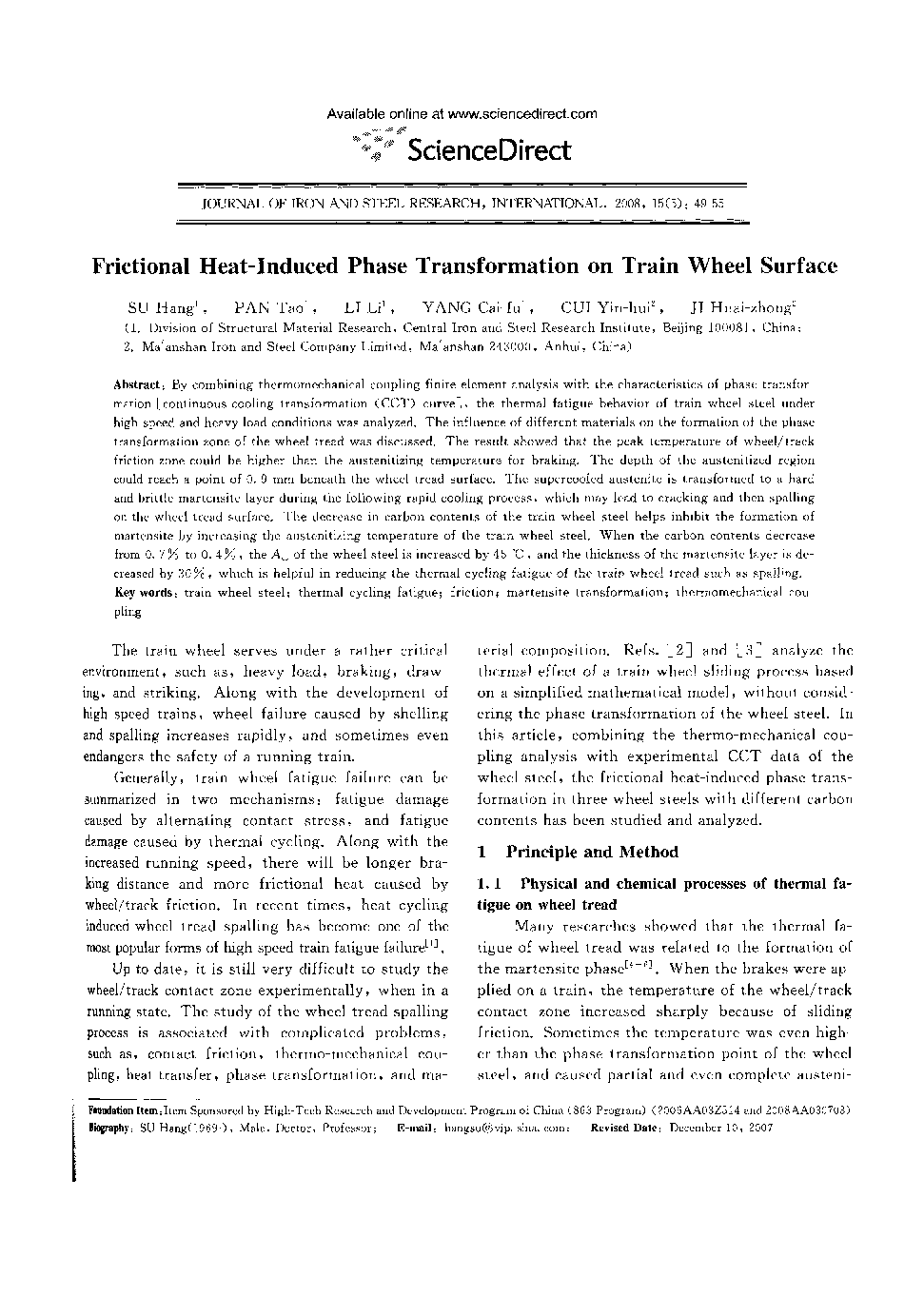| کد مقاله | کد نشریه | سال انتشار | مقاله انگلیسی | نسخه تمام متن |
|---|---|---|---|---|
| 1629308 | 1006136 | 2008 | 7 صفحه PDF | دانلود رایگان |

By combining thermomechanical coupling finite element analysis with the characteristics of phase transformation [continuous cooling transformation (CCT) curve], the thermal fatigue behavior of train wheel steel under high speed and heavy load conditions was analyzed. The influence of different materials on the formation of the phase transformation zone of the wheel tread was discussed. The result showed that the peak temperature of wheel/track friction zone could be higher than the austenitizing temperature for braking. The depth of the austenitized region could reach a point of 0. 9 mm beneath the wheel tread surface. The supercooled austenite is transformed to a hard and brittle martensite layer during the following rapid cooling process, which may lead to cracking and then spalling on the wheel tread surface. The decrease in carbon contents of the train wheel steel helps inhibit the formation of martensite by increasing the austenitizing temperature of the train wheel steel. When the carbon contents decrease from 0.7% to 0.4%, the Ac3 of the wheel steel is increased by 45 °C, and the thickness of the martensite layer is decreased by 30%, which is helpful in reducing the thermal cycling fatigue of the train wheel tread such as spalling.
Journal: Journal of Iron and Steel Research, International - Volume 15, Issue 5, September 2008, Pages 49-55